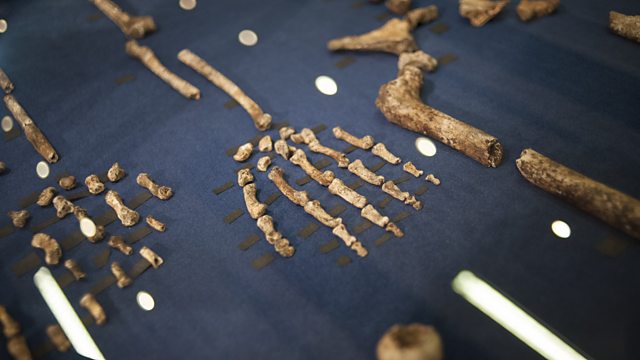
New Human-like Species Discovered
A very deep, hard to access, cave in the Rising Star cave system in South Africa has yielded a massive and important haul of fossilised early human bones
A very deep, hard to access, cave in the Rising Star cave system in South Africa has yielded a massive and important haul of fossilised early human bones. The bones have been assembled into 15 partial skeletons, of what have been called Homo Naledi – a new hominin species, which could either be one of the earliest Homo species and a precursor to modern humans. Or it could be like the Hobbit - Homo floresiensis, a redundant branch on the human evolutionary tree. The bones have yet to be dated, but the anthropological features suggest a small-brained, human-like creature. The most intriguing thing is where they were found and why in such numbers? Some think it could be a burial chamber and if these Naledis are very ancient, this could be one of the earliest examples of ritualistic behaviour in humans.
Can we Zap Sea-sickness?
Claudia Hammond tries out a new kind of experimental treatment for motion sickness.
Whale Culture
It used to be thought that the thing that made humans so special was that we had language and culture. But more and more examples of possible ‘culture’ in animals is being discovered. When we talk about culture we mean – it is something, such as a behaviour, that is socially learned and that it is a group behaviour. We know that whales are social and vocal creatures, so it stands to reason that scientists at Dalhousie University in Canada would want to see if they exhibit some form of culture. They studied large groups of female Sperm whales and found that even those that were unrelated in the group used the same patterns of calls. Similar to dialects in human language, different groups of whales used different patterns of clicks, or codas, to communicate things like where food is or look out for predators and to bond with each other. Clever modelling has ruled out any genetic or geographical reasons for the shared language, which leaves a form of cultural learning as the obvious reason.
Space suit
Astronauts' spines can elongate as much as 7 centimetres in space because of the loss of gravity potentially causing severe back problems. Tracey Logan talks to David Green from Kings College, London about a new elastic suit he has helped develop to mimic the effects of gravity.
Venki Ramakrishnan
Kevin Fong talks to Venki Ramakrishnan, Professor of structural biology in Cambridge and joint-winner of the Nobel Prize in Chemistry in 2009. Celebrated for his work on the ribosome, the remarkable molecular machine at the heart of all cell biology, Ramakrishnan was knighted for services to Science in 2012 and later this year, will become the first Indian-born president of the Royal Society, the oldest and most prestigious scientific body in the world. And yet, as Kevin discovers, his education and early academic career was anything but predictable or conventional and included being rejected from both Indian and US Universities multiple times.
Toxic Mercury Cycling in Sea Creatures
It has long been known that heavy metals, such as mercury are very difficult to get rid of once they enter the marine ecosystem. They are ‘biomagnified’ or ‘bio-accumulate’ up the food chain. Mercury typically starts out from man-made processes like coal burning or mining, or naturally from forest fires. It is rapidly converted to a toxic organic compound - methyl mercury - by bacteria in the environment. From this, the mercury then gets into the food chain, so the microscopic zooplankton have tiny amounts of the neurotoxin, but they are eaten in quantity by the little fish, increasing the concentration of the metal, which is stored in the body. Then the bigger fish eat the little fish and the pattern continues right up to the top ocean predators like swordfish, sharks, seals and sea lions. And because it is a toxin it is an issue for us and other animals when it is eaten. Through this fascinating process, the concentration of mercury can be biomagnified 1–10 million fold. But a new study in the journal PNAS this week shows that the route of the poisonous Mercury is not just bottom up, it is top down as well. Hair moulted off in huge quantities by colonies of seals, could be returning the mercury back into the marine ecosystem.
The Science Hour was presented by Claudia Hammond with comments from ������̳ Science Correspondent Victoria Gill
Producer: Deborah Cohen
(Photo caption: The skeleton of Homo naledi, a newly discovered human ancestor is displayed during the unveiling of the discovery on September 10, 2015 in Maropeng © Stefan Heunis/AFP/Getty Images)
Last on
More episodes
Previous
Broadcasts
- Sat 12 Sep 2015 21:06GMT������̳ World Service
- Sun 13 Sep 2015 10:06GMT������̳ World Service
- Mon 14 Sep 2015 05:06GMT������̳ World Service South Asia
Podcast
-
![]()
Unexpected Elements
The news you know, the science you don't

